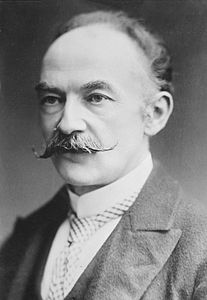Analysis of The Comet at Valbury or Yell'ham
Thomas Hardy 1840 (Stinsford) – 1928 (Dorchester, Dorset)
It bends far over Yell'ham Plain,
And we, from Yell'ham Height,
Stand and regard its fiery train,
So soon to swim from sight.
It will return long years hence, when
As now its strange swift shine
Will fall on Yell'ham; but not then
On that sweet form of thine.
| Scheme | ABAB CDCD |
|---|---|
| Poetic Form | Traditional rhyme Quatrain |
| Metre | 11110111 011111 100111001 111111 11011111 111111 11111111 111111 |
| Closest metre | Iambic tetrameter |
| Characters | 284 |
| Words | 53 |
| Sentences | 3 |
| Stanzas | 2 |
| Stanza Lengths | 4, 4 |
| Lines Amount | 8 |
| Letters per line (avg) | 25 |
| Words per line (avg) | 6 |
| Letters per stanza (avg) | 100 |
| Words per stanza (avg) | 25 |
Font size:
Submitted on May 13, 2011
Modified on April 10, 2023
- 16 sec read
- 74 Views
Citation
Use the citation below to add this poem analysis to your bibliography:
Style:MLAChicagoAPA
"The Comet at Valbury or Yell'ham" Poetry.com. STANDS4 LLC, 2024. Web. 5 May 2024. <https://www.poetry.com/poem-analysis/36492/the-comet-at-valbury-or-yell%27ham>.


Discuss this Thomas Hardy poem analysis with the community:
Report Comment
We're doing our best to make sure our content is useful, accurate and safe.
If by any chance you spot an inappropriate comment while navigating through our website please use this form to let us know, and we'll take care of it shortly.
Attachment
You need to be logged in to favorite.
Log In